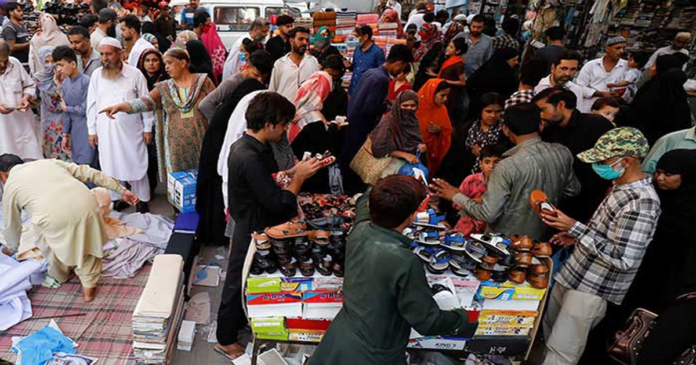He stressed that if the nation continued to rely on fossil fuel and oil for its energy demands, “our economy will remain vulnerable.” Saudi Arabia has decreased its oil production by one million barrels, which might increase oil prices to $100 per barrel.
Govt decides to shut markets at 8 pm: According to the planning minister, one of the policies the administration wished to implement in this respect dealt with energy conservation.
He cited the federal cabinet’s promise to carry out last year’s National Energy Conservation Plan directives. But, he said, “the provinces were not represented at that meeting.
But now, he continued, “we are hoping that the provincial governments would see to it that the energy saving package that has been authorized today is implemented.
Iqbal described the strategy in detail, stating that the energy-saving steps included converting to LED lighting, replacing geysers to be more energy-efficient, and closing down stores and commercial buildings by 8 pm. He continued, “Such actions could assist the nation in saving up to $1 billion annually.”
The minister added that promoting green energy was a different decision in the energy industry. “Projects of solar, wind, and hydel energy will be promoted, and we will not introduce any new projects based on imported fuel,” he declared.
Spending on development
Ahsan Iqbal pointed out that the administration also established a budget goal of a projected 3.5 percent GDP growth. The growth target, according to him, is doable. He declared that we are making decisions that will move the nation towards stability.
Apart from the GDP and development spending, which Ahsan Iqbal stated will total Rs1,150 billion ($4.02 billion), no additional budget goals were disclosed.
Iqbal stated in a press conference that the National Economic Council (NEC) had suggested an Rs2.709 trillion annual development plan (ADP) for the coming fiscal year (2023–24).
“The total national outlay [Rs 2,709 billion] contains the development budget of Punjab and Khyber Pakhtunkhwa for only four months [due to caretaker setup in the province],” the minister added. “However, if their full budget is included in the ADP, it will exceed the figure of Rs 3 trillion.”
According to Ahsan Iqbal, the provinces would be given Rs1,559 billion under the ADP to carry out various development projects. At the same time, the federal government would invest Rs1,150 billion as part of the Public Sector Development Programme (PSDP 2023–24).
He referred to the PSDP’s allocation of Rs. 1,150 billion as the largest in the nation’s history. He called it the present government’s “milestone achievement” despite its dire financial situation.
“Deplorable state of the economy”
During the press conferences, Iqbal also brought up the dire state of the economy, claiming that federal earnings would not be sufficient to pay off all of the government’s debt.
He declared, “This is a defining moment of where we’ve reached. The remainder of the budget, which covers government salaries and the costs of defense, development, pensions, and subsidies, will require the nation’s borrowing.
Pakistan, also experiencing political unrest, has been experiencing a severe balance of payments problem for months, with its central bank’s foreign exchange reserves falling so low that they are now just enough to fund one month’s worth of restricted imports.
Iqbal announced a few hours after providing Reuters with the data, which included the 3.5 percent GDP objective and a 21% inflation forecast for the fiscal years 2023–2024.
The source noted that the estimated figures were discussed at the meeting before the budget announcement. This could result in a re-review revision before Finance Minister Ishaq Dar’s presentation in parliament.
Pakistan’s Budget Challenges Amid IMF Mandates, Election Preparations, and Economic Struggles
According to the source, the budget’s overall expenditure, or total spending, is anticipated to be Rs14.5 trillion ($50.70 billion). The plans, he continued, also included a target for a fiscal deficit of 7.7% of GDP and a target for tax collection of 9.2 trillion Pakistani rupees ($32.17 billion).
The administration is wedged between an IMF-mandated harsh fiscal adjustment reform plan and the need to comfort the populace ahead of a scheduled national election in early November. Thus the budget is being closely scrutinized.
The country’s GDP growth for the current fiscal year 2022–23, which ends on June 30, decreased to 0.29% from last year’s annual budget aim of 5% and the central bank’s reduced prediction of 2%.
The highest inflation rate ever recorded in Asia was 38% in May. Pakistan needs the IMF’s $1.1 billion investment, which has been stagnant since November, to unlock other bilateral and multilateral finance to prevent a debt default.

